
Ladies!!!
How are you all doing?
I get asked time and time and time again about genetics and hair length. So many ladies are insistent that long healthy hair is a product of genetics alone. These ladies also believe that nothing you do in terms of hair care can have any significant effect on the length and thickness of your hair because “this hair thing is only genes” apparently.
The truth is this – Genes are only one of the factors that determines your actual length and thickness.
If you do not take good care of your hair, you will NEVER know what your hairs genetic potential is. How will you know what your hair is genetically capable of if due to lack of care, your hair in a damaged state permanently. I use myself as an example just to drive home this point. Look at the pictures below.

No one ever looked at my hair and thought “oh this girl’s hair can grow” . I myself never realised that I had the genetics to grow hair longer than shoulder length UNTIL I cared for it correctly. My clients and so many other ladies on social media have shared their healthy hair transformations from damaged and very short to healthy, long and lush. This should prove that there is more to actual hair length than genes alone.
Yes, there are some ladies who don’t take care of their hair and still have amazing hair. Those ladies hair would be even more amazing IF they took care of it There are three factors that determine how long, healthy and thick each lady’s hair is. These are: 1) Genetic factors 2) Internal factors 3) External factors.
ALL three play a SIGNIFICANT part in determining what your hair is actually like.
Genetic Factors
Genetic factors we are born with will determine –
- The colour of our hair,
- The texture and thickness of our hair strands
- Density (number of strands)
- How long our hair can grow and the speed of our hair growth
You can have hair that is capable of growing to your bum but only have shoulder length hair in real life. How long your hair is capable of growing is determined by the length of your anagen phase and how fast your hair grows (eg half an inch a month or one inch a month). The anagen phase is the growing phase of hair before and sheds. The anagen phase on average varies from as short as 2 years to as long as 6 years.
On average, humans of all races grow approximately half an inch a month. So, if you have two women who both grow the average half an inch a month, the woman whose anagen phase is 6 years will be capable of growing hair longer than the one whose anagen phase is only 2 years long. In reality though, both of these women can have hair the same length depending on some other internal and external factors explained below.
There isn’t anything you can do to change the genetics you were born with. Genetics are factors you cant control. But please note that based on genetics, on average everyone should be able to grow a minimum of 12 inches. EVERYONE!!!! This is because the minimum anagen phase is believed to be approximately 2 years.

Same girl. same genes, same health and fitness level, same type of diet. The only thing I changed was how I cared for my hair.
Internal Factors
There are internal factors which can affect our hair’s genetic capabilities. Some of these factors include
- Hormonal imbalances
- Some medical conditions
- Medications
- Diet and water intake
- Stress levels
These factors can affect hair growth and/or thickness by either halting or slowing down hair growth and/or cause excessive shedding and thinning. Some of these factors are within your control and some are not. For example you can try to have a good diet and healthy lifestyle. Having a medical condition or hormonal imbalances are clearly not things you control.
As an example, a woman may have the genetics to grow 20 inches of medium density hair but a hormonal imbalance can mean that in reality she has 10 inches of sparse hair. With internal factors, some of them can be worked on and improved and some may need some treatment or therapy to overcome.
External Factors
External factors that can influence the state of your hair includes
- Our hair care and hair styling practices (having a hair regimen, using good products correctly, avoiding excessive manipulation, avoiding aggressive manipulation, wearing styles that are safe for your hair type, etc)
- Environmental damage – such as damage from UV rays, hard and salt water, cold or humid weather conditions
- Chemical damage – chemical straightening and colouring processes.
These factors are within your control and this is where having a healthy hair regimen comes into play!!!! With the right regimen for your hair type, hair needs and lifestyle, you can control the amount of damage your hair sustains. For instance, a woman with natural textured hair can have it chemically coloured but if she does not give it the level of care that her process hair needs or follow correct colouring procedures, she will likely sustain damage and breakage. This will prevent her hair from reaching its genetic potential.
Another example is of a lady who does not protect her hair correctly in the winter months or one that uses a lot of flat irons which damage hair. The lady may have genes that make it capable for her to have 22 inches of hair, but her hair care practices will cause damage and breakage which may mean in reality she only has 6 inches of hair. She would be growing hair capable of getting long but damage and breakage keeps it at a shorter length.
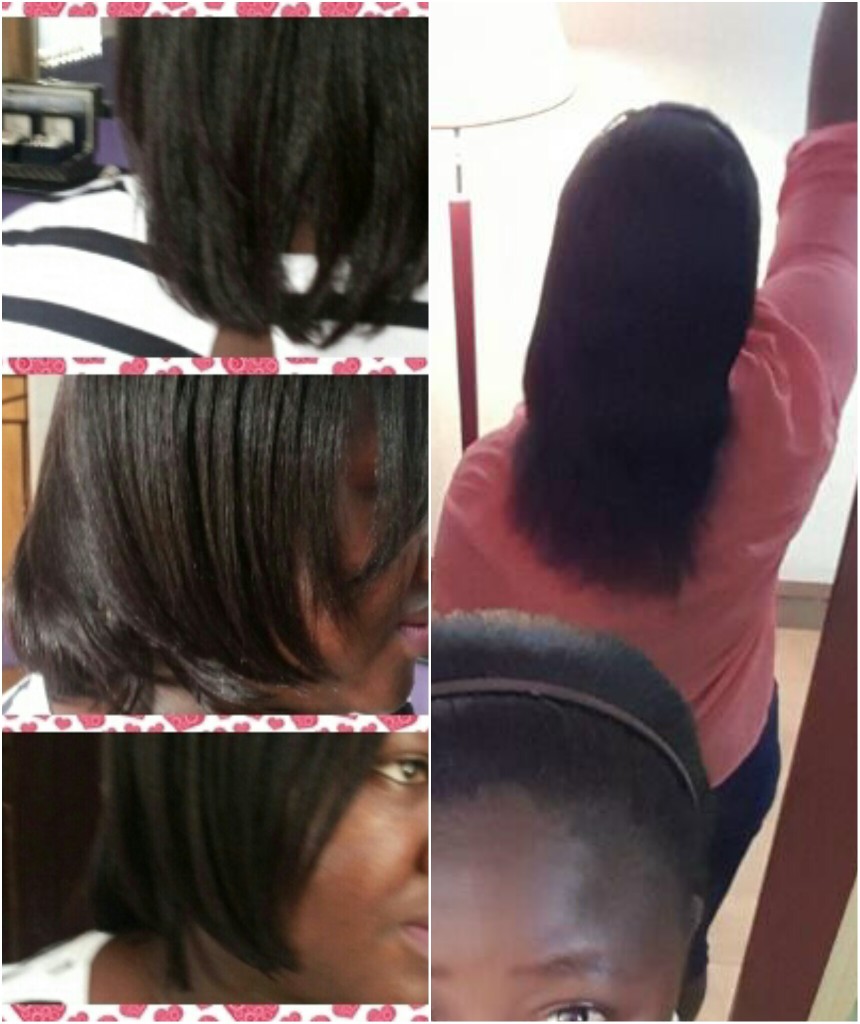
A client’s progress
I hope this post helps you understand the balance between genetics and the other factors which determine the hair we have in reality.
Going back to the example of the two ladies above, where one woman has an anagen phase is that is 6 years and the other has an anagen phase of 2 years. If both are genetically capable of growing half an inch a month, both of them would grow 6 inches in a year. The woman with the 6 year anagen phase will be capable of growing 36 inches hair and the woman with the 2 year anagen phase will be able to grow 12 inches of hair. This is described as their terminal length (the maximum length their hair can grow to). Imagine both these ladies currently have hair that is 4 inches long and the one capable of growing 12 inches begins to care for her hair and grows it to 10 inches. The lady capable of growing 36 inches may begin to admire those 10 inches not realising that her own hair is capable of growing 36 inches IF she took care of hers. The moral of the story is take care of yourself internally and have a good hair care regimen that works for your hair type and meets your hairs needs. This will go a long way to helping you maximise your hair growth potential
😊
Happy hair journey
X
Lade
Learn | Change | Grow
Texlax Update April 2018: Part 2
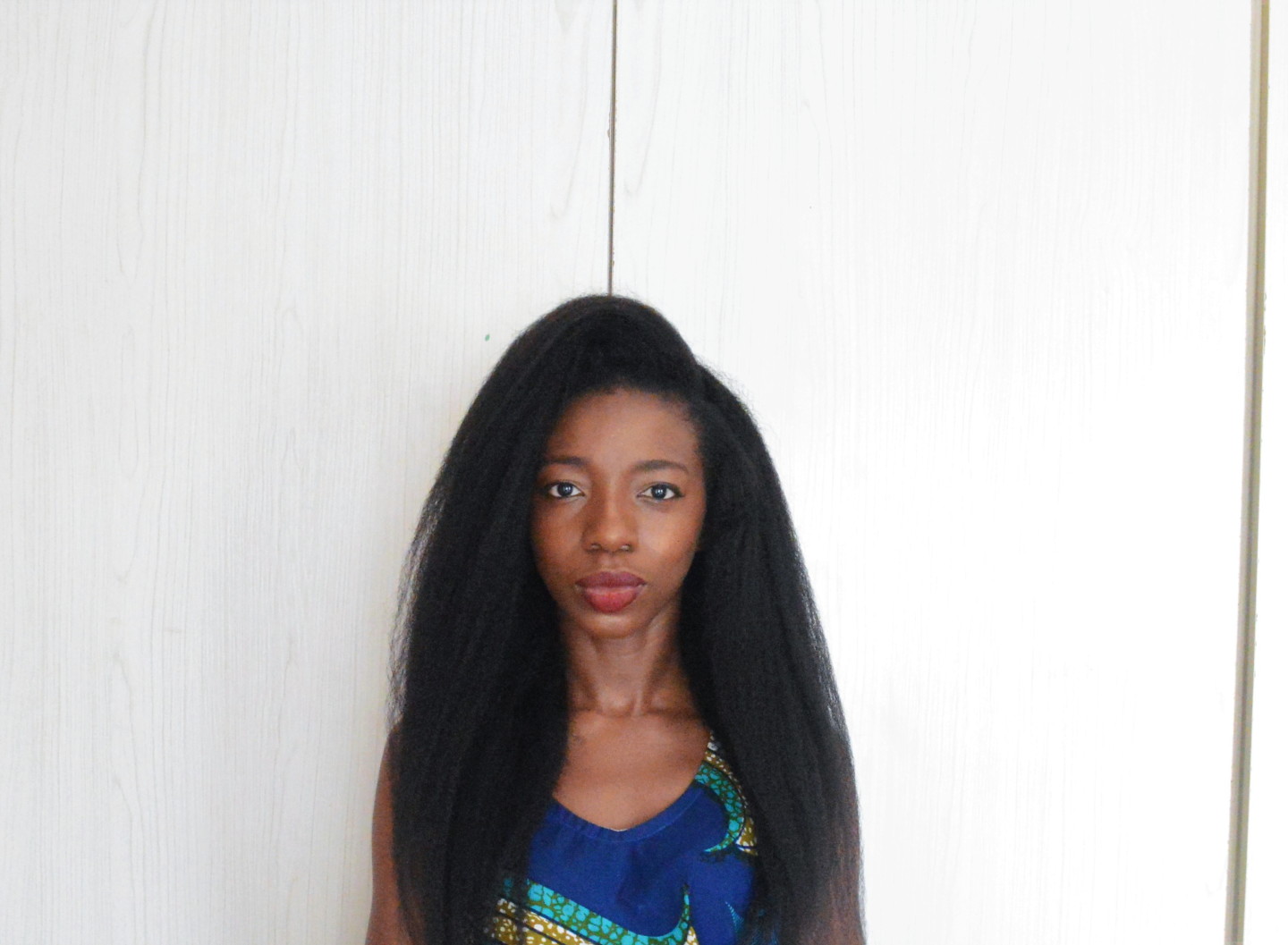
Hello Ladies
As promised, in this post I am going to share pictures of my hair which I texlaxed a month ago. I am also discussing the major challenge I had with my hair last year, how it led to me cutting off over 5 inches off my hair and how I managed to maintain waist length hair despite the cut.
I failed ladies, I failed in getting pictures of my hair blow out. I had reserved a day to get my wash and a few other things done but then I had a really bad fever so wash day was cancelled. I washed it eventually the next day when I felt better but I air dried. If you are new to Hairducation and my texlaxed hair you may not know that it shrinks when I air dry it so my hair looks shorter than its blown out length. For anyone who wants to see my blown out length you will see it in my highlights on my IG page later today. So with that said, the pictures in the post were taken on my last wash day when my hair was dry but my roots were still very damp.

My Major Hair Challenge from 2017
I moved to the UK for 9 months in March last year and arrived with hair that was in my opinion, the best it had ever been. After a few months it just didn’t feel the same way, it tangled more, seemed to be changing colour and felt different and not in a good way. My hair looked okay but if didn’t feel as good as it should have. I was baffled because I was keeping up with my regimen despite my crazy schedule at the time and using products that worked well for my hair.
I texlaxed in September 2017 and was shocked by how bad my ends were tangling even after deep conditioning. Ladies when I say tangles, I mean grab a scissors and cut me out tangles. For the first time in a long time I had to trim my ends because it needed a trim. Usually I trim my hair on texlax day to keep my hair at waist length. But this time those ends HAD to go so I trimmed off two inches and was still waist length.
By October I looked at my ends and thought hold up, I need another trim???? Why??? I’ve been good to my hair so why are my ends looking busted. I trimmed off about an inch and half and my hair felt so much better. Giving the issue some thought I realised it was the hard water prevalent in many parts of the UK.
The mineral in hard water penetrates the cracks of hair fibres and cannot be removed by normal shampoos. The more porous the hair fibre is, the deeper and more affected the hair will be by the minerals. The mineral will form a coating on the hair and prevent your hair products from working. This will lead to discoloured and very dry hair which tangles and breaks.
I remembered how badly hard water affects my hair and decided to start chelating my hair once a month. I was sure that would fix it because I had grown my hair from shoulder length to bra strap length in a hard water area of the UK following my current regimen. I was convinced that increasing the regularity of my chelating would suffice.
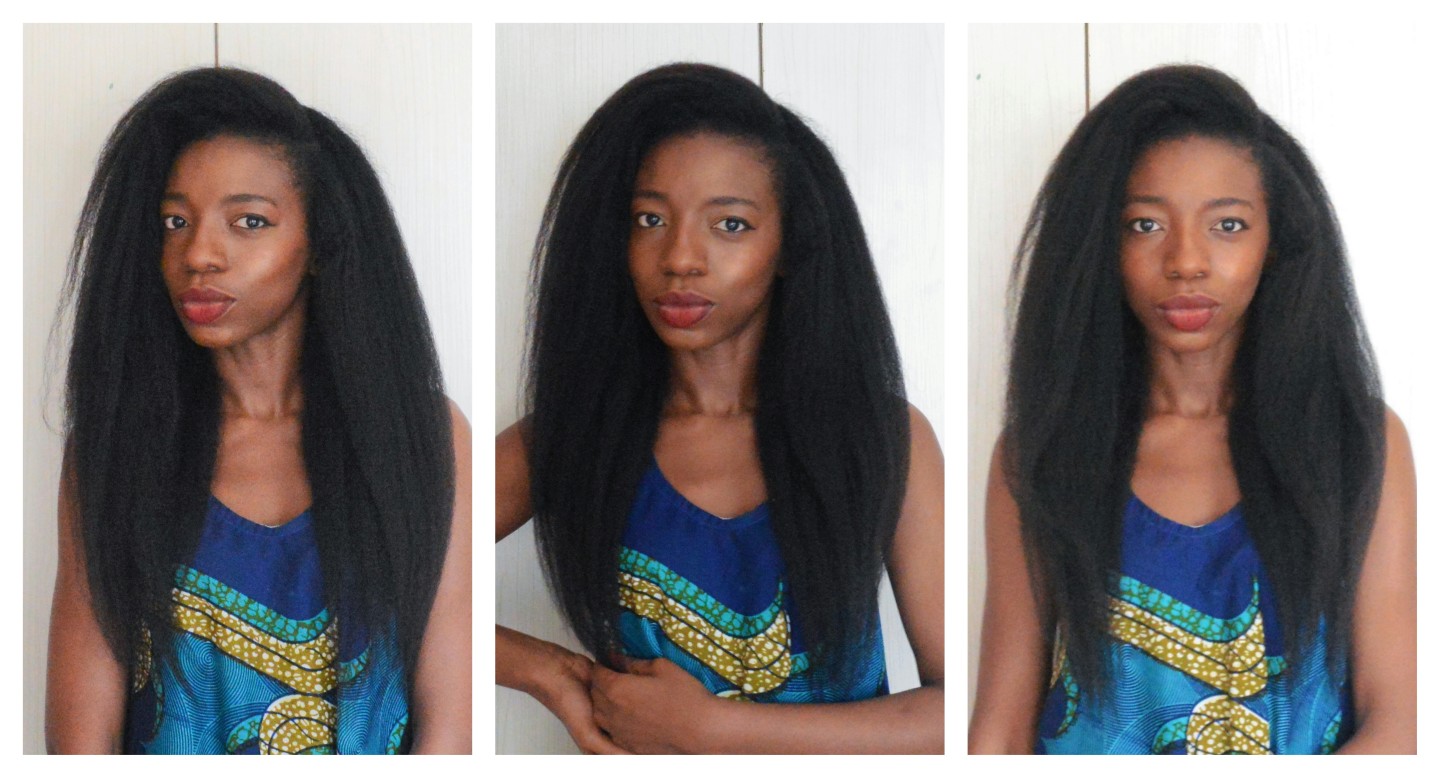
After my return to Nigeria at the end of 2017, I began to panick because my hair was still acting crazy despite no longer being in a hard water area. I could no longer predict how my would respond to products or techniques. So being a research prone person, I dug deeper and found out exactly what the issue was. It was……….hard water. Yes …that was still the cause. The residue of hard water was still in my hair and that was what was causing all the havoc.
I was puzzled and didn’t understand why the hard water had such a horrible effect on my hair in comparison to my earlier years in the UK. I carried out further research and discovered something I never realised. There are varying levels of hard water. Through my research I found that the area I lived in at the earlier part of my hair journey had hard water whilst the area I lived in in 2017 had extreme levels of hard water. You can compare the levels in the image below.

Despite my return to Nigeria, I realised I probably still had some hard-core mineral residue on my hair fibres. I purchased and used a very strong swimmers shampoo by a brand called Ion. I washed a second time with my Cream of Nature Argan Oil shampoo and deep conditioned as normal. The difference to my hair was immediate but I trimmed off another two inches to get rid of thinned out ends. I also realised why my ends bared the brunt of the hard water damage. The ends of hair are the most porous parts of hair and as I mentioned earlier in this post, the more porous the hair, the more damage it will sustain from the hard water. The key lesson here is that for ladies who live in countries with hard water, find a way to check your hard water levels. If it is high, consider getting a shower head hard water filter and use a strong chelating shampoo every 3 to four months to remove the minerals that may be on your hair fibres. Don’t let hard water wreck your hair like it almost did mine.
My hair has been doing great since then and I am back to being happy with it and I hope you have learnt a thing or two from my experience.
Have you had any challenges with your hair recently? How are you bouncing back from it?
My next post will be an educative post about split and damaged ends. I will be sharing a few microscopic images of healthy and damaged ends. There will be loads to learn so see you soon
X
Lade
Learn | Change | Grow
Texlax Update April 2018: Part 1

Hello ladies,
I hope your hair journeys are going well and that your hair is well hydrated and breakage free😊
I finally texlaxed my hair!!!! To be exact I did the texlax on the 16th April, just over two weeks ago. My schedule on my texlax day meant I didn’t have time to stop to take pictures. I have had one wash day since I texlaxed but again I didn’t get round to using my camera but I did take some short videos using my phone.
If you follow me on Instagram, you may have seen one of the videos. I will share some screen shots of the video in this post and will put up the rest of the videos on my Instagram stories. In this post I will share how my texlax day went, my texlax process and then share the pictures which show my current length.
My Texlax Day and Process.
Ladies, almost 7 months of new growth is not a joke. After my Ready Steady wash day, I wore my hair in a simple bun up-do for 4 days. I detangled and moisturised and sealed lightly during the week. By day 5, my texlax day, my hair felt a little matted and dry, why?? I had used very little moisturiser during the week as I didn’t want my hair to feel or get wet because wet hair isn’t supposed to be relaxed. Also, although I detangled regularly , because I didn’t want to aggravate my scalp, I didn’t pull or stretch my new growth, so it had shrunk and matted a bit. The point I am trying to get to is that preparing my hair on my texlax day took a while because of the amount of new growth I had to detangle very gently. Detangling 20inches plus of hair in small sections is time consuming.
After I got through prepping my hair, the rest of the texlax day was a breeze. I followed my usual process and timings which you can read by clicking here.
My Current Length
After applying my leave-ins, I blow dried in sections and I cut two inches off my ends because I do not want longer hair. I am maintaining waist length. In the pictures in this post the black belt is my waist line. My hair is a little longer than waist length so I will trim off an additional inch in a few weeks.

Currently my hair is doing quite well, and I will have it out for a while before the wigs make a comeback. Although this is more of a hair update post, I hope you have learnt something new from my relaxer process. Have your relaxed or texlaxed your hair recently? How did it go?
I mentioned in my last post that my hair faced some major challenges over the last year. In my next post I will share more about how bad it got, how it led to me cutting off 5 inches off and how I grew the hair back and how I got my hair to grow faster than normal. You don’t want to miss it. I should have taken proper relaxer update pictures by then too….so see you soon.
x
Lade
Learn | Change | Grow
Ready Steady: Preparing your Hair for Relaxing and Permanent Hair Colours
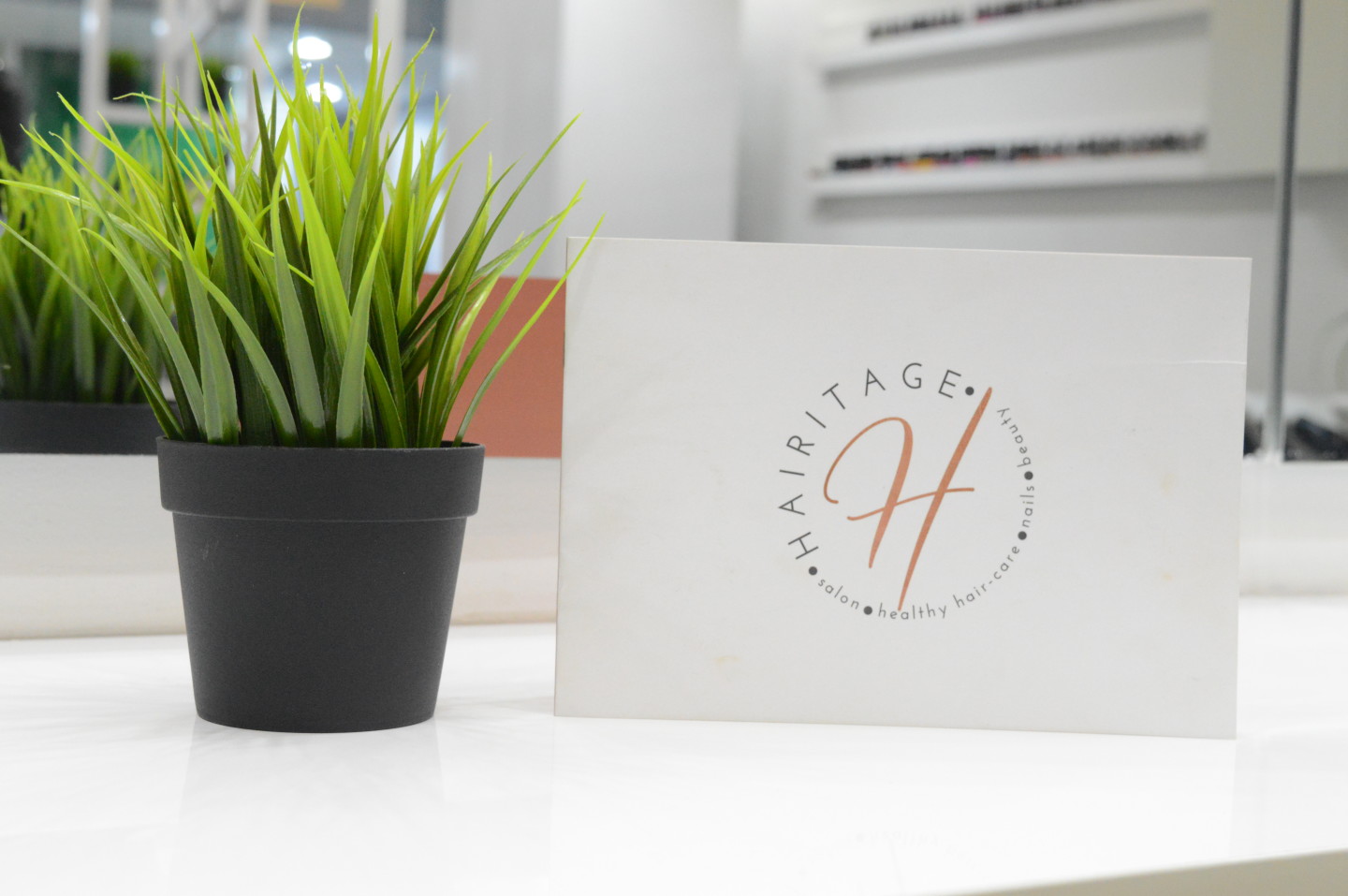
Hello Ladies,
‘My hair is breaking!! I don’t know what happened, its been breaking so much and I don’t know why’ .
Lade, can you tell me how to make the breakage stop?
This is a question and scenario I have heard and been in so many times. Each time I am faced with this question, I take a deep breath and ask myself, where do I start from? How do I explain that there are so many things that can cause hair to break and in most cases it usually isn’t one thing.
I will write more posts about breakage, the numerous things that can cause it and how best to prevent it. In this post, I will discuss one of the most hidden reasons for damage and breakage and how to avoid it.
One of the biggest game changers and key contributors to my success on my quest for healthy and long hair was learning that hair must be prepared for relaxing or colour processing. When I began my hair journey and took every aspect of it seriously, I stopped the habit of removing my hair from extensions and relaxing it the same day or the day after. I did the right things instead. Keep reading if you want to learn more 😊
Why Hair Should Be Prepared for Chemical Services
Relaxers and chemical hair dyes break down some of the protein bonds in the cortex layer (inner layer) of our hair and unfortunately this makes our hair weaker. Relaxers and hair dyes are harsh processes and if done on hair that isn’t strong enough to withstand the process, will result in more protein breakdown than would have occurred had the hair been prepared correctly. So yes relaxers and colours weaken the hair but the weakness will be a lot worse if you don’t complete some steps 4 to 7 days prior.
Now if you don’t prepare your hair for a chemical service your hair will not disintegrate or fall apart on relaxer or colour day. As a matter of fact, it may even look great and feel great on relaxer or colour day and in the initial weeks afterwards. Overtime (months and years) however, the hair will become so weak and damaged it will eventually break and each strand will become thinner too. So ladies if you notice that your relaxed or coloured hair is beginning to break more and more and you can’t figure out why, note that incorrect preparation for the chemical process may be just one of the many reasons your hair is breaking.

My hair after my Ready Steady wash day. PS – excuse the corny hand on shoulder pose. I was hiding my underwear 🙂
How to Prepare Hair for Relaxing
For ladies who are new to Hairducation, I’d like to make it clear that contrary to popular belief, hair should not be very dirty before a chemical process. Preparing hair for relaxing should begin 4 to 7 days before the relaxer or colour treatment. A cleanse to remove build up from hair should be completed and this must be followed with a conditioning treatment that will fortify the keratin levels in the hair. In other words, it isn’t your regular wash and condition day. This is one of the many reasons why we offer a variety of wash days at Hairitage. We have a wash and condition treatment called Ready Steady which was designed specifically to be completed by ladies in advance of their relaxing or colouring services.
After the wash day, wait 4 to 7 days before you proceed to relaxing or colouring your hair. You should leave your hair alone in those 4 to 7 days and avoid any intricate hair style that may stress or irritate your scalp. A simple bun or goddess braids would be ideal. Essential oils should be avoided that week too.
I will be relaxing my hair very soon after almost 7 months and I have completed my own Ready Steady wash day. Cannot wait!!!!!
Do you prepare your hair for relaxing or permanent colour treatments? Yes or no??
My next post will be my relaxer update post and I’ll be sharing a bit about some major challenges I’ve faced with my hair over the last year and how I have overcome them. Come back soon ladies!!!
Happy hair journey
x
Lade
Hair Update March 2018
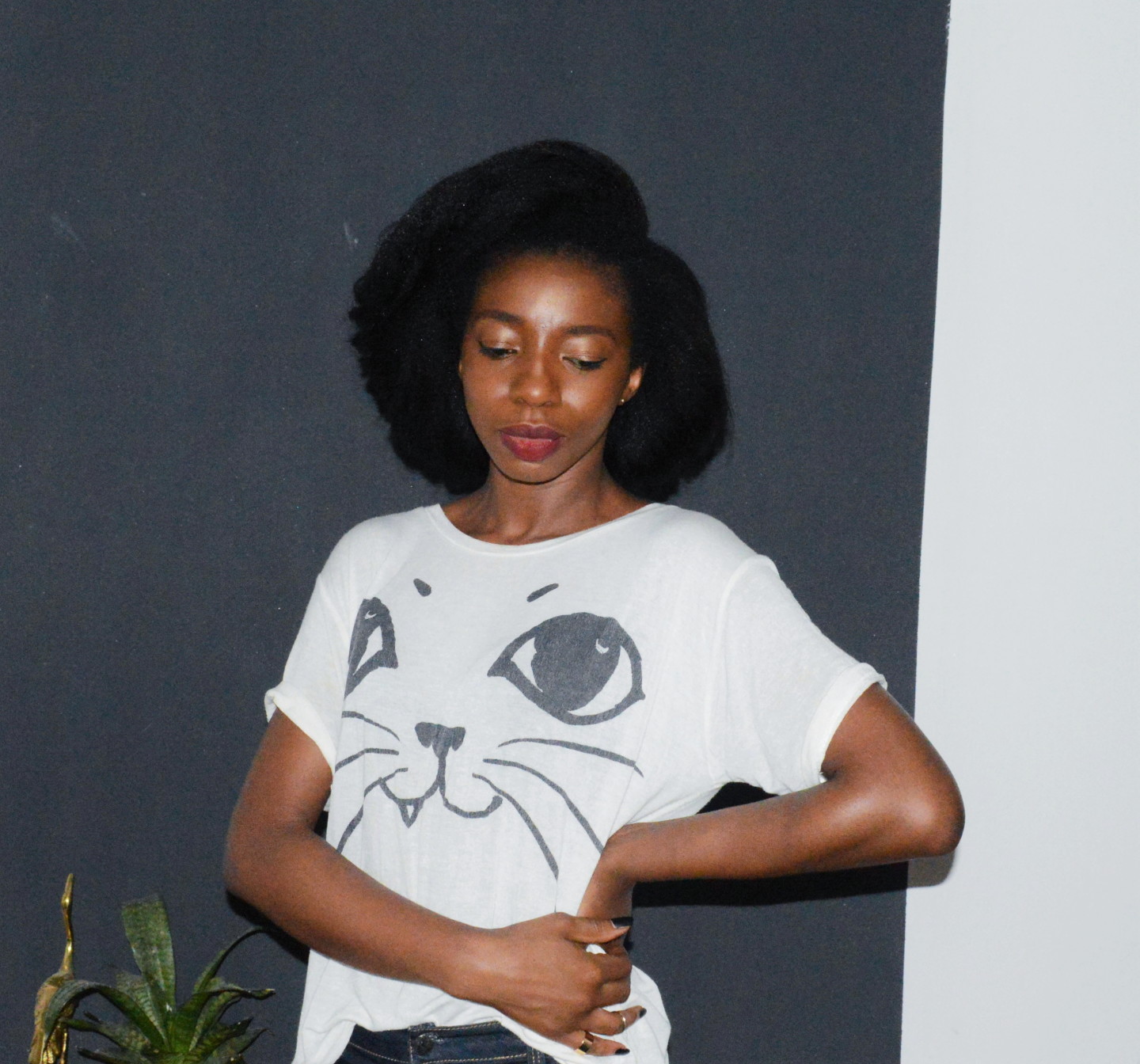
Hello ladies,
I am 6 months post relaxer today!!!!. My last texlax was done on 23 September 2017.
As always, I never intended to stretch this long but a busy schedule means I just have to put my texlax on hold until I create some time. A chemical process isn’t something to be done in a rush. The length of my hair and the amount of new growth I have also means preparing my hair for relaxing takes a while.
Having this much new growth stresses me out!! Hair care and wash days takes so much time and patience that I find myself avoiding and postponing wash days because I just don’t want to deal with it. Naughty me right!
For ladies who are new to Hairducation, relaxed hair with a lot of new growth can be very difficult to manage because of the conflict in textures between the coily/kinky natural new growth and the straighter previously relaxed ends. Hair in this state is prone to breakage.
Manipulation (detangling, combing and styling) MUST be kept to a minimum and a good way to do this is to wear a long term protective style responsibly. You must be very very gentle and patient on the days that you are manipulating your hair (i.e. wash days and when installing or removing extensions) to reduce the risk of breakage. I have been wearing wigs for majority of the time to cut back on daily manipulation. Occasionally, after my wash day, I’ll leave my hair out for a few days and enjoy the volume that the new growth gives my hair.

My hair itself is in a decent state but it would be better if I gave it more attention and care. I am trying to keep up with most of my regimen but need to moisturise more thoroughly than I currently am by working in smaller sections. I will probably cut/trim off one to two inches when I texlax in a few weeks.
So in a nutshell, at the moment, my hair is okay. It can be better, but its okay. Now that I’ve written this post I am going to make the effort to do a tad bit better.
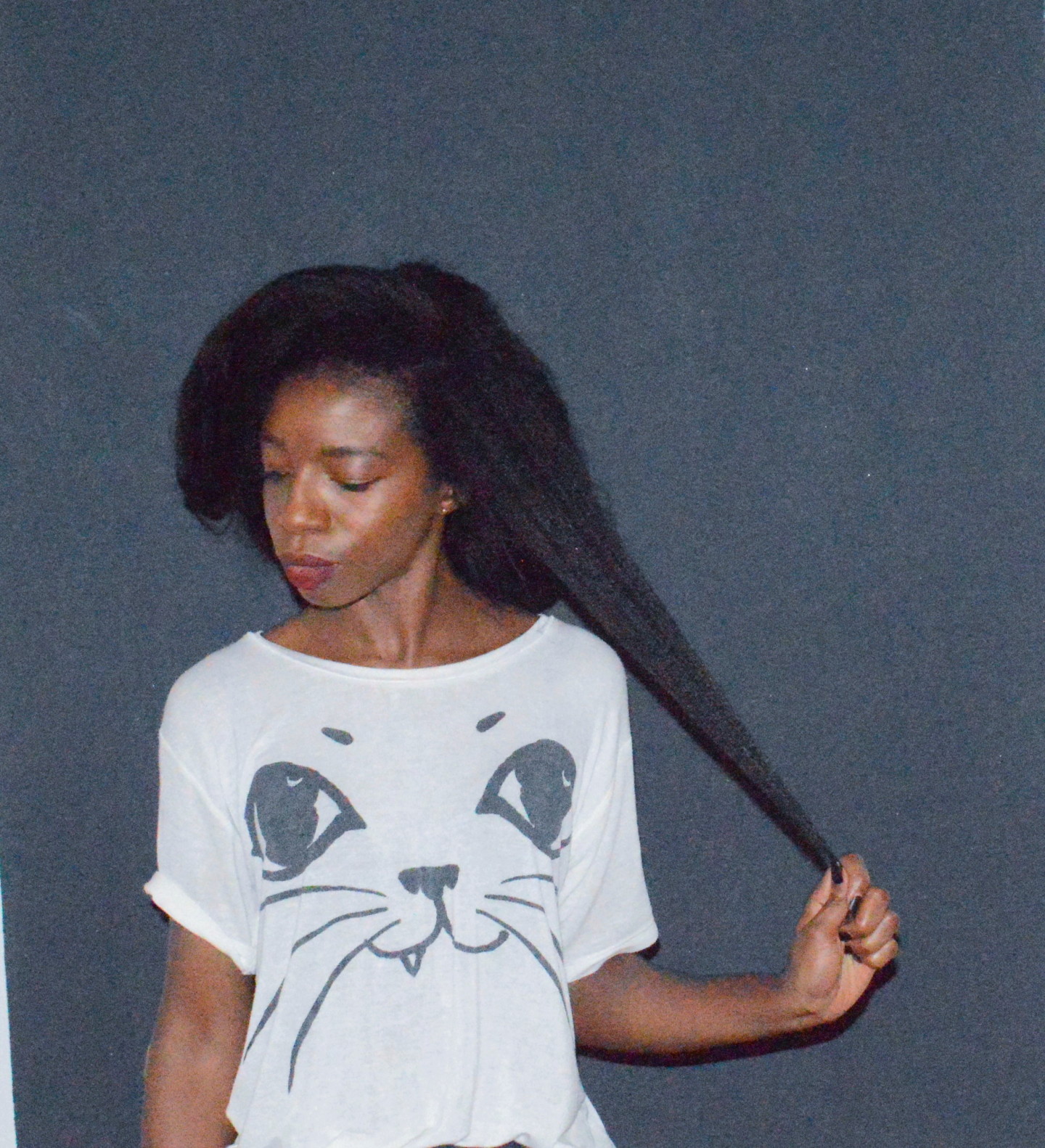
How consistent are you with your hair regimen at the moment?
My next post will be about the benefits and challenges of natural and relaxed hair. Some might find it a bit controversial because some ladies may not see what benefits there may be in having chemically processed hair.
